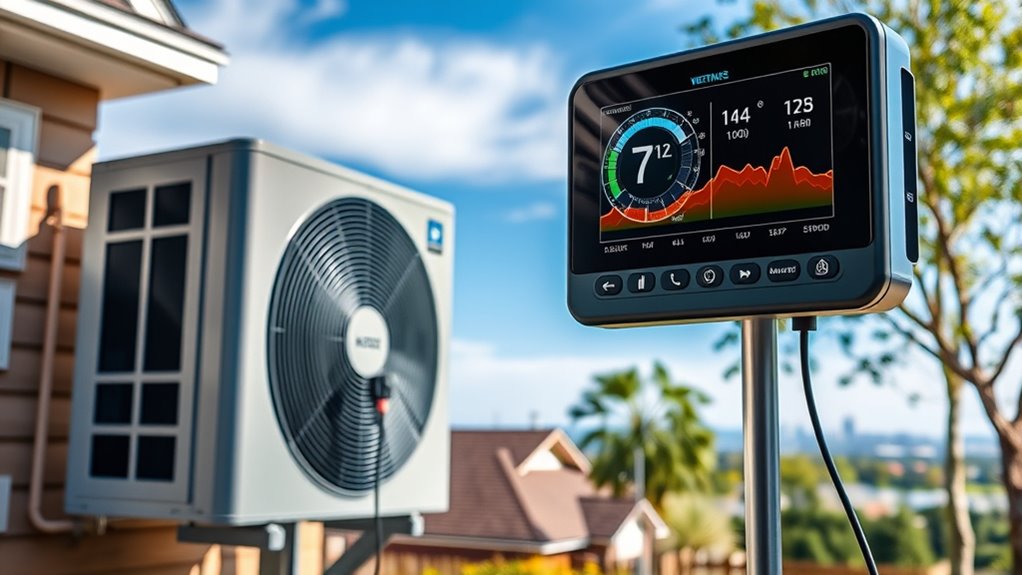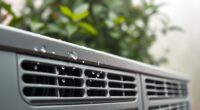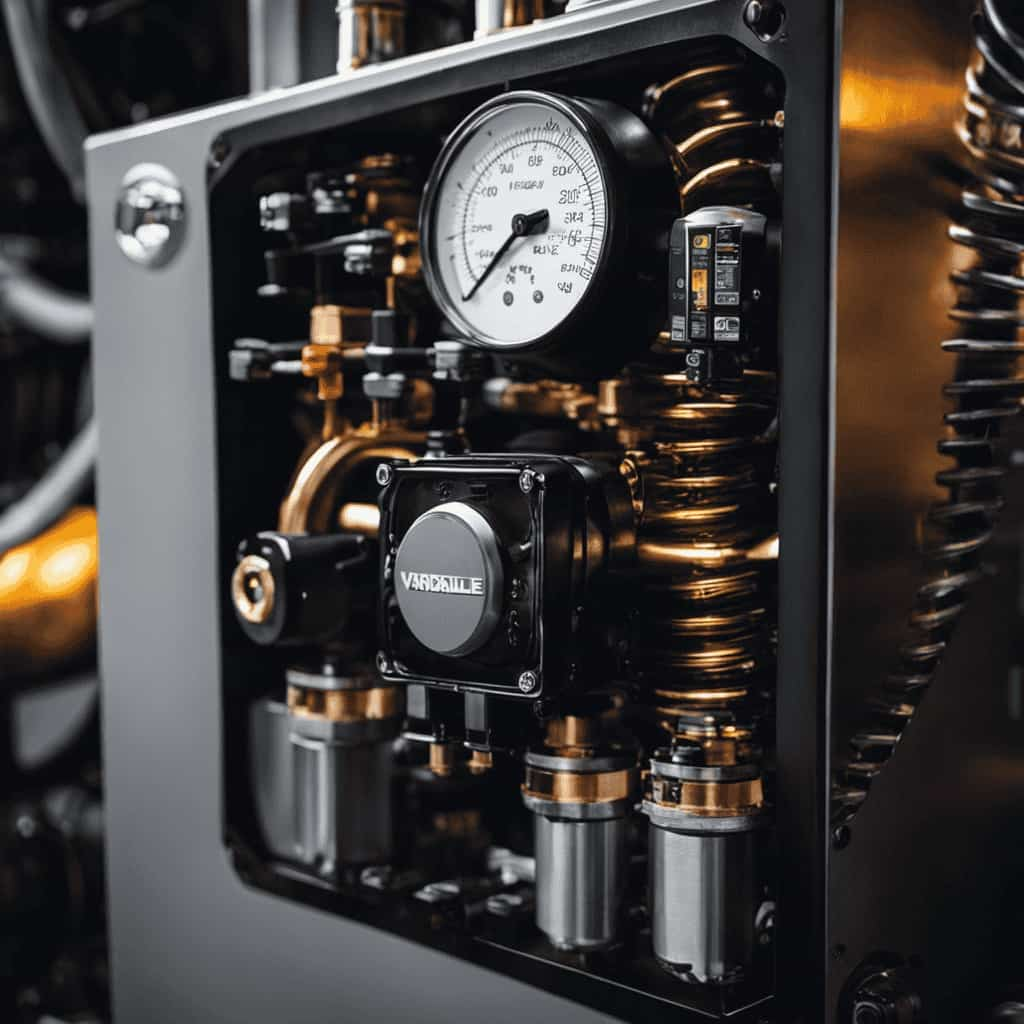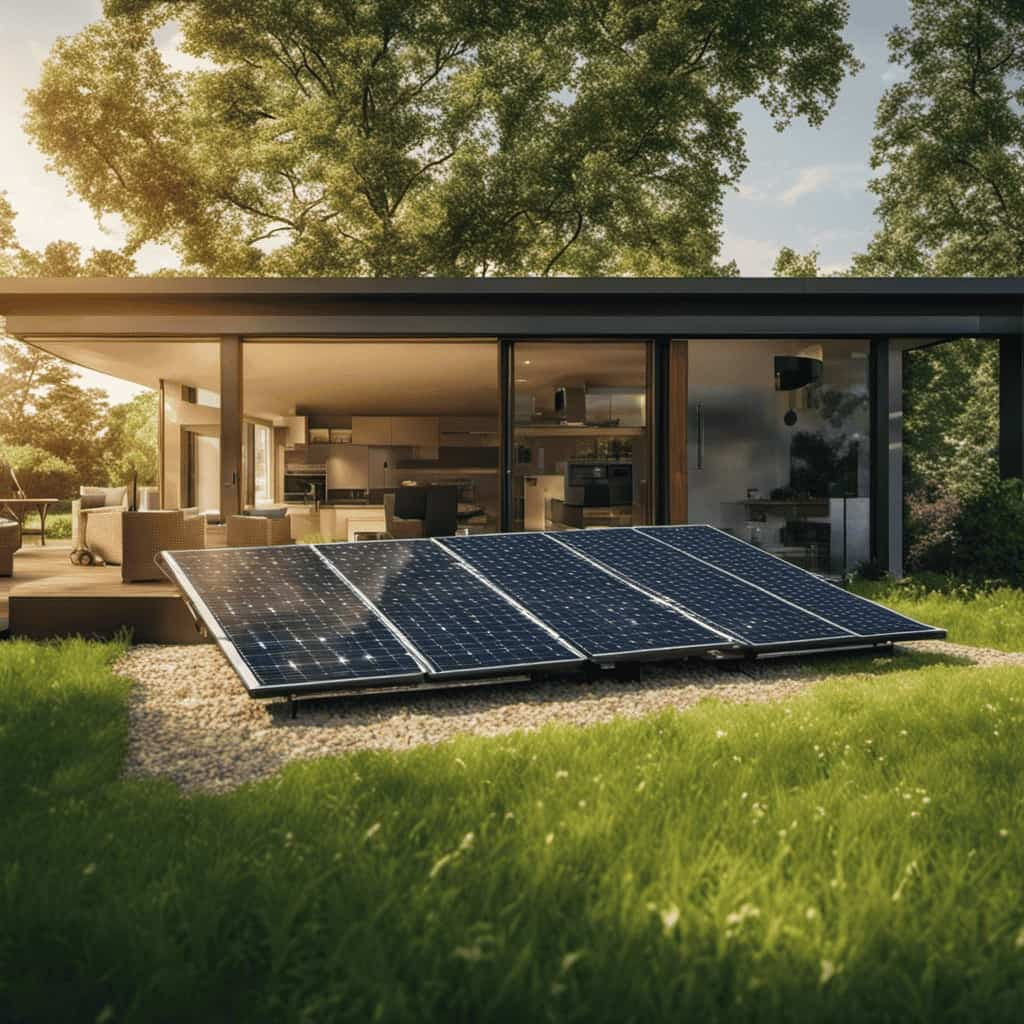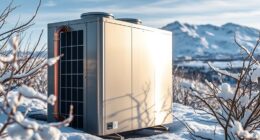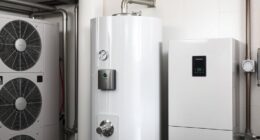Using weather data helps you predict your heat pump’s energy use by providing real-time outdoor temperature, sunlight, and seasonal patterns. When you track these conditions, you can anticipate when your system will work harder during cold spells or less during milder days. Accurate forecasts allow you to optimize operation, save energy, and improve comfort. If you want to learn how to apply weather data effectively for better efficiency, keep exploring more insights.
Key Takeaways
- Analyzing outdoor temperature forecasts helps estimate heat pump workload and energy consumption for different weather conditions.
- Monitoring sunlight and solar gain patterns allows prediction of supplemental energy needs for heating or cooling.
- Tracking humidity and wind data improves accuracy in forecasting heat pump efficiency and energy use.
- Using weather trends enables proactive adjustments to system settings, optimizing energy use during expected temperature changes.
- Integrating forecast data into automation systems helps anticipate and manage energy consumption efficiently.

Weather data plays a crucial role in understanding how heat pumps perform and how much energy they consume. When you’re trying to optimize your system, knowing the outdoor weather conditions helps you predict how efficiently your heat pump will operate. For instance, if the forecast indicates cold temperatures, your heat pump may need to work harder, increasing energy use. On the other hand, milder weather can mean less strain on the system and lower energy bills. Accurate weather data allows you to anticipate these changes and adjust accordingly, ensuring your heat pump runs efficiently year-round.
One key factor influenced by weather data is solar efficiency. As sunlight varies throughout the day and seasons, it impacts how much supplemental energy your heat pump might require. During sunnier periods, your system can rely more on solar gains, reducing the energy needed to heat or cool your indoor space. Conversely, cloudy days or shorter daylight hours lower solar efficiency, meaning your heat pump has to compensate by consuming more energy. By monitoring weather patterns, you can better predict these fluctuations and plan your energy use accordingly, maximizing the benefits of solar efficiency and maintaining a consistent indoor temperature.
Indoor temperature is another critical aspect affected by weather conditions. When outdoor temperatures drop, your heat pump must work harder to maintain a comfortable indoor environment. If you’re aware of the upcoming cold snap, you can preemptively adjust your thermostat or implement energy-saving measures to avoid sudden spikes in energy consumption. Conversely, during warmer weather, your system can operate more efficiently, requiring less energy to keep your indoor temperature stable. Tracking weather data helps you understand these trends, so you can fine-tune your system’s settings to optimize comfort and efficiency.
Furthermore, understanding the relationship between outdoor weather and indoor temperature helps you make smarter decisions about insulation, shading, and other energy-saving strategies. When you know a cold front is approaching, you might increase insulation or close blinds to retain heat. If a warm spell is forecasted, you can open windows or adjust cooling systems to take advantage of natural ventilation, reducing reliance on your heat pump. Additionally, automation in business is increasingly used to help manage these adjustments automatically based on weather data, further enhancing energy efficiency. Overall, integrating weather data into your energy management routine empowers you to make informed choices, minimize unnecessary energy use, and keep your indoor temperature comfortable regardless of outdoor conditions.
Frequently Asked Questions
How Accurate Are Weather-Based Heat Pump Energy Predictions?
Your weather-based heat pump energy predictions can be quite accurate, especially when you guarantee proper sensor calibration and effective data integration. Accurate sensors provide reliable weather data, reducing errors in your forecasts. Combining real-time weather info with historical data helps refine your predictions. Keep sensors calibrated regularly and integrate diverse data sources to improve accuracy, so you can better anticipate your heat pump’s energy needs and optimize its performance.
Can Weather Data Predict Seasonal Fluctuations in Heat Pump Efficiency?
Think of weather data as a weather vane guiding your heat pump’s performance through seasonal changes. You can predict fluctuations in efficiency by observing humidity trends, which affect heat transfer, and solar radiation, which impacts outdoor temperatures. These factors help you anticipate when your system might struggle or excel, allowing you to optimize energy use throughout the seasons and keep your home cozy year-round.
Do Local Climate Variations Affect Prediction Models?
Yes, local climate variations do affect prediction models. Urban heat and microclimate effects can cause temperature fluctuations that differ from broader regional data. You should incorporate urban heat island impacts and microclimate factors into your models to improve accuracy. Ignoring these local variations may lead to less precise predictions of heat pump energy usage, especially in densely populated or diverse environments. Adjusting for these factors helps your model better reflect real-world conditions.
How Do Extreme Weather Events Impact Heat Pump Energy Use?
Like Icarus soaring too close to the sun, extreme weather events can push your heat pump’s limits. During heatwaves, high humidity effects drive up energy use as the system works harder to cool. Conversely, strong winds influence heat loss, making heating less efficient. These fluctuations challenge prediction models, requiring them to adapt to rapid changes in temperature, humidity, and wind, ensuring your heat pump remains reliable amid nature’s extremes.
What Additional Data Improves Prediction Accuracy?
You can improve prediction accuracy by including indoor humidity levels and equipment maintenance data. Indoor humidity affects heat pump efficiency, so tracking it helps refine energy use estimates. Regular maintenance records reveal potential inefficiencies, allowing for better predictions. Combining weather data with indoor humidity and maintenance history gives a thorough view, enabling more precise energy consumption forecasts and helping you optimize your heat pump performance effectively.
Conclusion
By harnessing weather data, you can uncover a crystal ball that predicts your heat pump’s energy needs with surprising accuracy. Think of it as tuning into nature’s secret whispers, turning unpredictable weather into a reliable roadmap. When you understand these patterns, you’re not just reacting to the weather—you’re dancing with it, choreographing smarter energy use that saves money and reduces your carbon footprint. Embrace this knowledge, and let your home breathe in harmony with the seasons.
